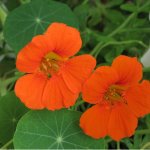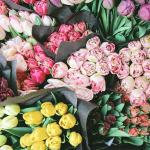5 Things to Consider When Selecting Flowers for a Winter Wedding
We may associate blushing brides with spring and summer, and these certainly tend to be the most popular times of year to hold a wedding. But plenty of couples elect to use the winter season as a backdrop for their nuptials, not to mention using their holiday time off for their honeymoon. Of course, the challenges of planning a winter wedding are a little different than an event held in summer. First and foremost, an indoor wedding and reception are a must if you want a colder climate to play host to your nuptials. And you’ll have to figure out how to work around the difficulties of travel, not only for out-of-town guests, but also when shuttling between venues. As for other issues you’ll have to figure out, flowers might be at the top of your list. Here are just a few things you’ll have to take into consideration when selecting flowers for a winter wedding.
- Seasonal options. When you’re having a winter wedding you can quickly get sucked into the trap of relying on winter plants, which is to say, those that are prevalent around the holidays or come in holiday colors. But instead of decking the church with calla lilies and poinsettias and festooning your reception with mistletoe, you should know that the winter season allows for a wide variety of floral options. You may not have easy access to blooms like lilacs, daffodils, or tulips that tend to blossom in spring, or the dahlias that dominate the summer season. But most winter brides aren’t interested in the pastels of spring or the hotter hues of summer. If you want flowers that tend to be in season throughout the year, stick with roses, orchids, and perhaps even the calla lilies popular during the winter months. You should have no trouble locating these seasonal beauties and you can enjoy the richer tones that will better compliment winter lighting.
- Winter whites. The most beautiful and sophisticated winter weddings adopt a winter white theme that lends an ethereal atmosphere to the proceedings. With hues ranging from bright white to ecru, eggshell, ivory, and cream, you can create a nuanced palette of whites that will give you the chic and stylish look you crave. And finding white flowers in winter should be a cinch.
- Your wedding colors. The colors you choose for a winter wedding will obviously have some effect on your floral arrangements. As for color palettes that are traditional, white and red are the classic combo, with darker reds hues tending to dominate. But blue/purple options that mimic the lighting of the winter season are also popular.
- Your location. If you live in a cold climate or you’ve chosen to host your winter wedding amongst snow-covered peaks, consider that laying your hands on flowers may not be as easy as, say, in a tropical locale. For this reason you need to carefully coordinate with your on-site florist to make sure that he/she can arrange to have the flowers you select available for your wedding.
- Cost. Availability is not the only issue when it comes to your floral selection: cost is also an important factor. And since your options are somewhat limited, selecting out-of-season flowers or those that must be shipped in from elsewhere is obviously going to increase your expense. If you’ve already picked the perfect dress from Allure Bridals, you’ve put a deposit on the venue, and your other ducks are in a row, you simply might not have the budget on hand for additional floral expenses. Luckily, you should have access to plenty of seasonal flowers that can help you to cut costs a bit.
More to Read:
Previous Posts:


